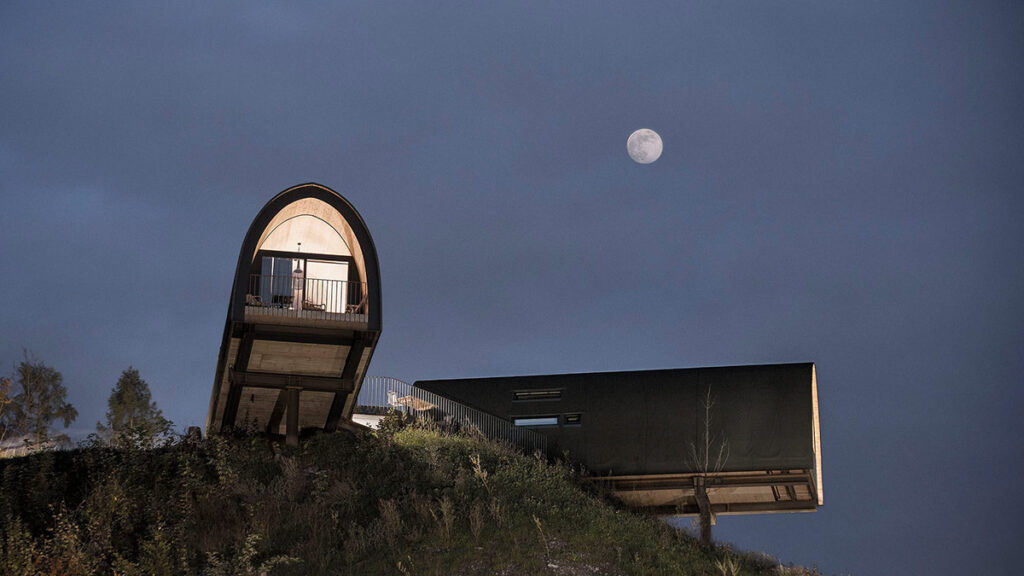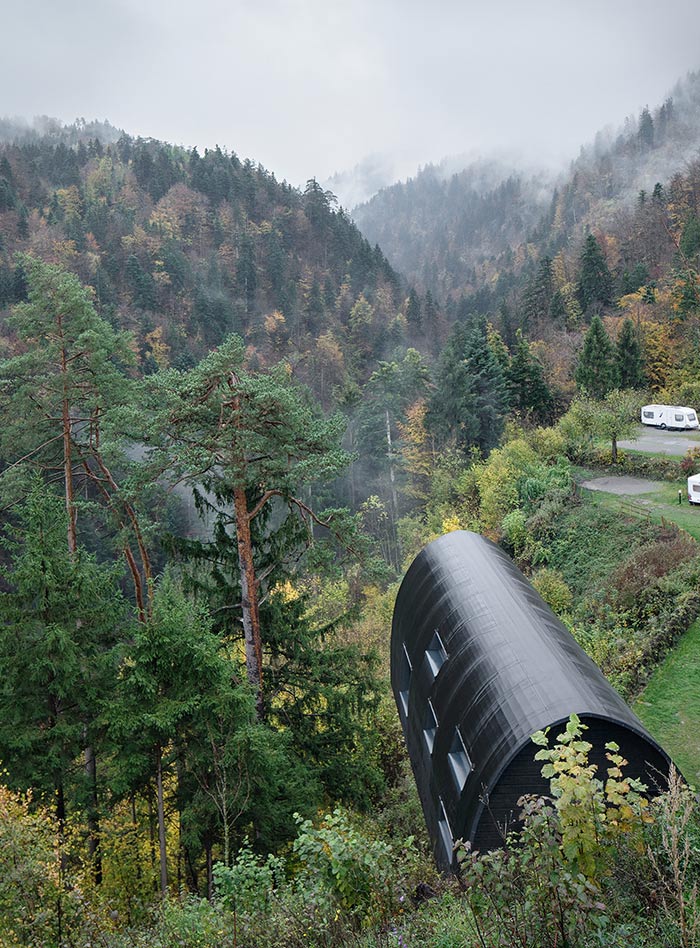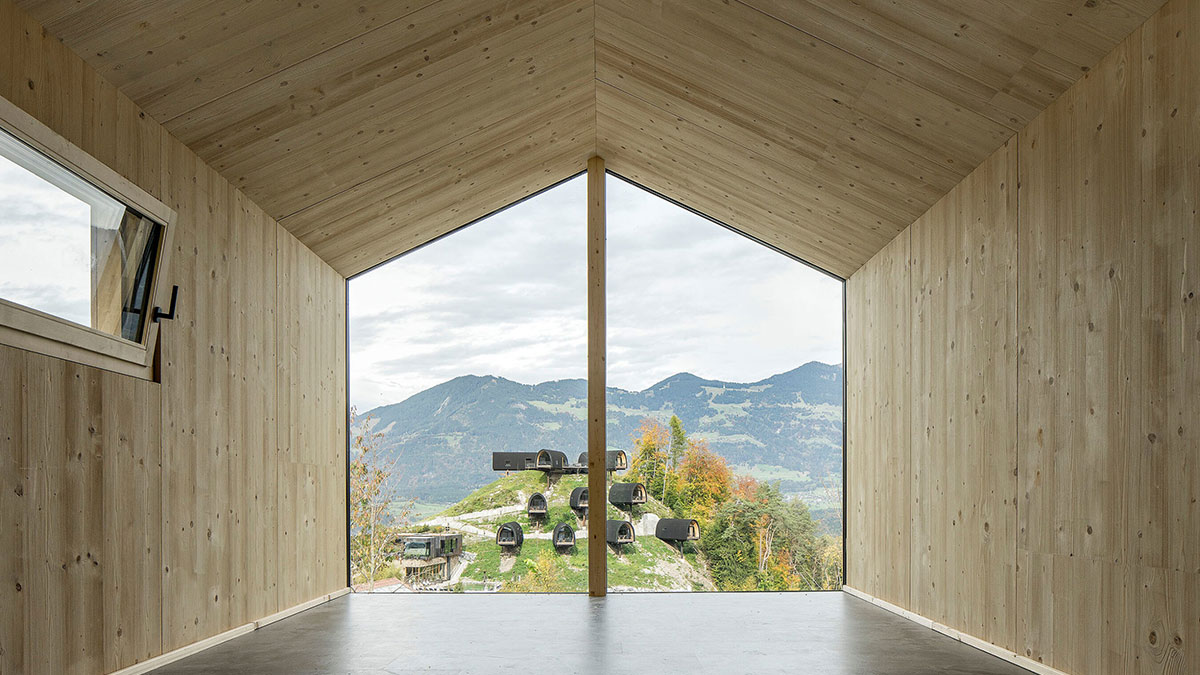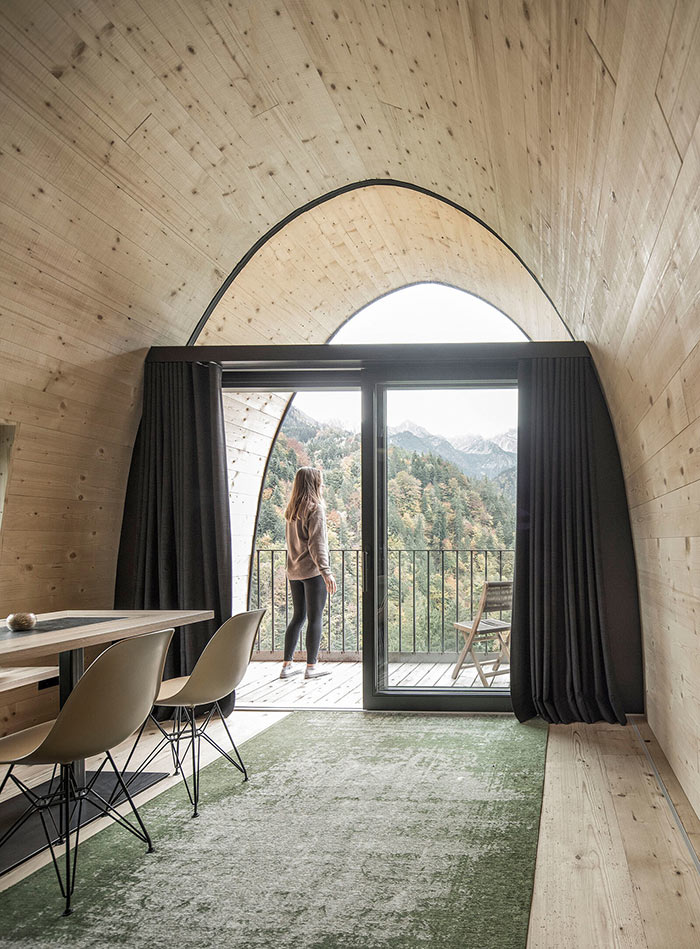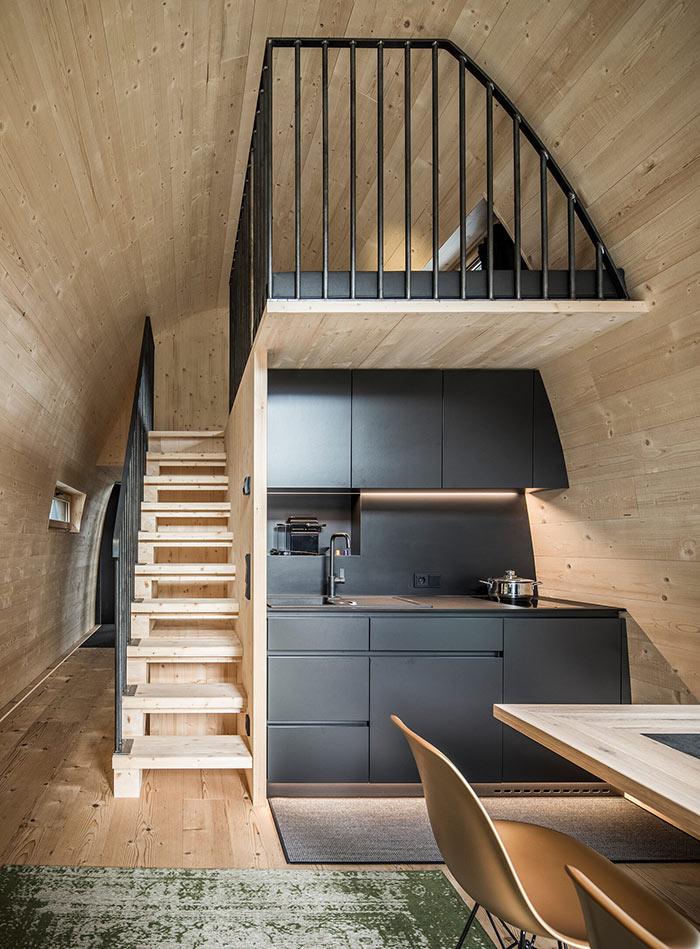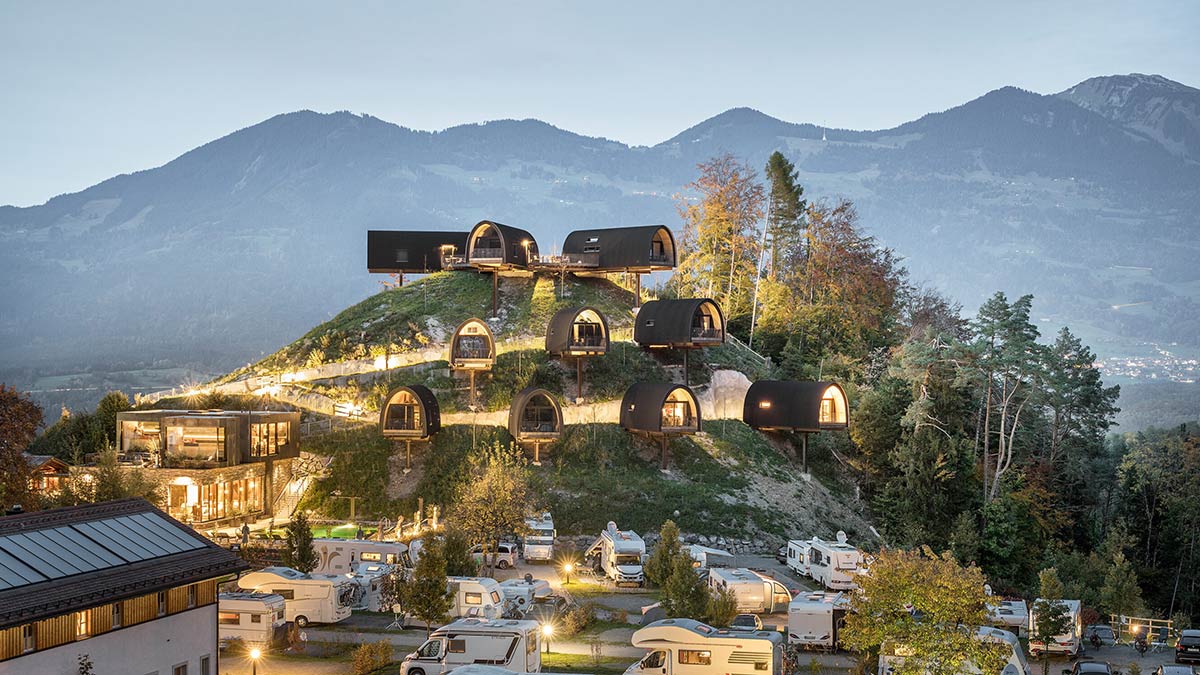Glamping in hilltop chalets
A luxury campsite at the foot of Vorarlberg’s Rätikon mountain range has been enlarged, with the addition of ten timber tiny houses. These hilltop chalets are a reinterpretation of the Alpine hut, and their design has won several awards.
Where once a farm nestled in the heart of the Austrian Alps, for the past 40 years luxury campers have enjoyed an oasis of comfort. This idyllic location for those in search of rest and recuperation is found in a woodland glade above Nenzing in the state of Vorarlberg, about 2 km from the centre of the village. A family-run campsite, Alpencamping Nenzing, has added ten tiny houses with fantastic views. “Indian Hill”, as it is known here, was chosen as the site for these chalets.
Optimized parabolic shape
These luxurious cabins use parabolic tubes, whose shape sets them apart from conventional Alpine wooden huts. This choice of design was influenced by several different aspects, as the architect responsible for the project, Reinhold Hammerer, explains: “The parabolic shape of the cross-section on the one hand allows ideal deflection of static forces, and on the other it enables an optimum use of the interior space.”
The parabolic shape of the cross-section on the one hand allows ideal deflection of static forces, and on the other it enables an optimum use of the interior space.
Reinhold Hammerer, architect
A frameless arched window 3.5 metres high has been fitted at the end of the vaulted arch to the south. And the position of the huts ensures that the mountain panorama remains undisturbed for the pleasure of the chalet guests. “On the planning side, the idea was to position the houses on the hill in staggered layers,” explains the founder of Hammerer Architekten. “The chalets are distanced accordingly to create an interesting outside space.”
Densely built, densely greened
In recent years, chalet hotels have developed into a global trend. You can find them at dizzying heights above the Norwegian fjords, like the Bolder Skylodges. Or they flash like jagged mirrors out of dense forests along the upstream Yangtze, like the Mountain and Cloud Cabins in China.
These projects are frequently found in expansive nature preserves, with the lowest possible site density and smallest possible footprint. In contrast, these hilltop chalets in Nenzing are much closer together. Another ten chalets are set to follow in a second phase.
Lush greenery between the chalets helped the architects to integrate the project into the surrounding landscape. “Over 30 trees and 800 bushes were planted to allow uncontrolled, dense greening of the site,” the architect’s project description reads.
Local timber and skills
The individual buildings are 4.20 metres wide and up to 13.5 metres long, and weigh up to 27 tonnes. They were completely prefabricated in the production hall by local carpenter Thomas Heiseler. “The biggest challenge was the transport to Nenzing from Sonntag in Großes Walsertal,” says Heiseler. Following arrival at the construction site, they were installed using a mobile crane.
Vorarlberg is known for its timber constructions, and the campsite is surrounded by forests. And so for the clients, it was clear from the outset that the chalets would be wooden. The building material comes largely from local forestry.
Multiple awards
Inside, the cabins offer a full range of equipment. This includes a bespoke bathroom, superior fitted mini-kitchen and a bedroom area. Some of the chalets also have their own outdoor pool. And a wellness area with pool and two restaurants is also available at the campsite.
The Nenzing hilltop chalets have won numerous prizes, including the Iconic Award 2021, the German Design Award 2021 and the Muse Design Award 2020. They also made the longlist for the 2021 Dezeen Awards in the category “Hospitality Building” and received the Vorarlberg Tourism Innovation Award in 2020.
Text: Gertraud Gerst
Translation: Rosemary Bridger-Lippe
Photos: Albrecht Immanuel Schnabel, Hammerer Architekten
